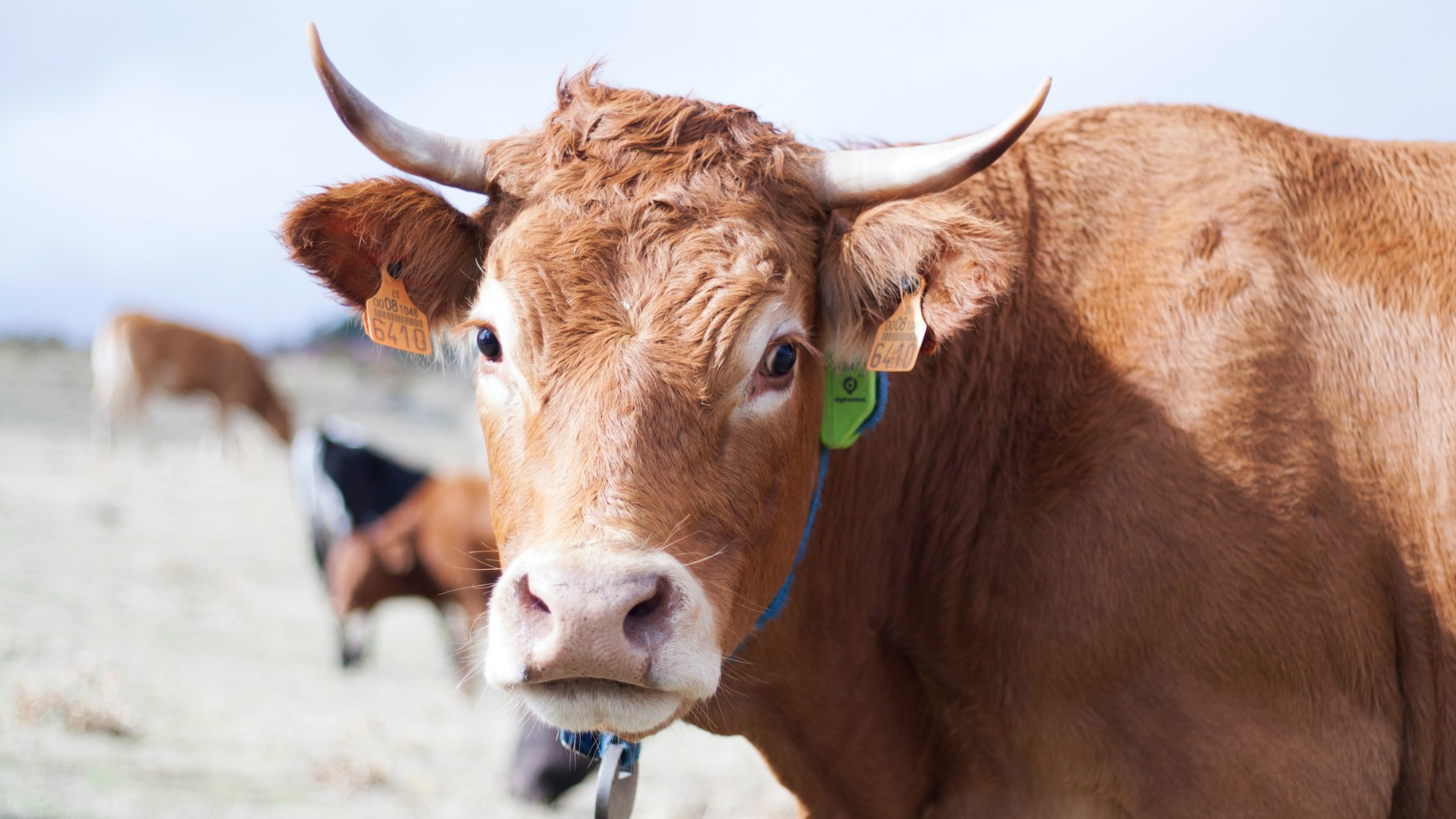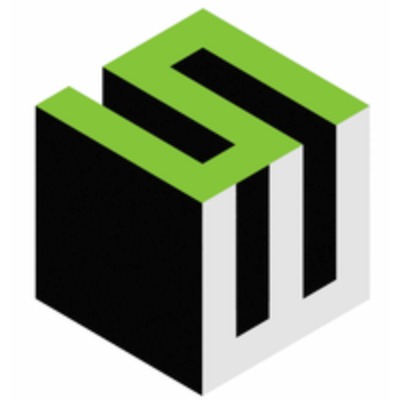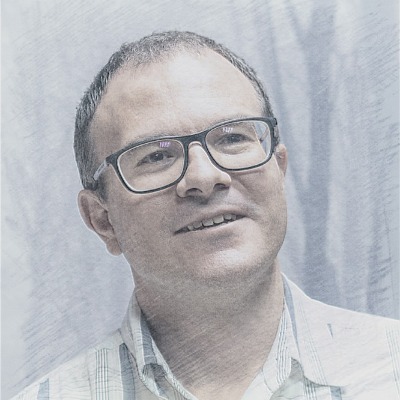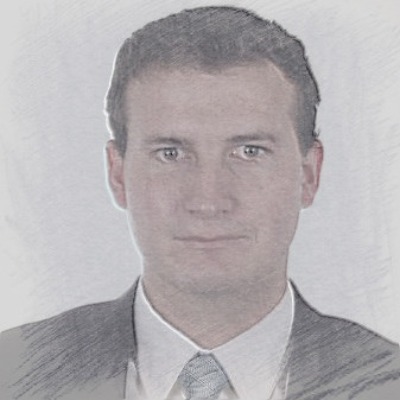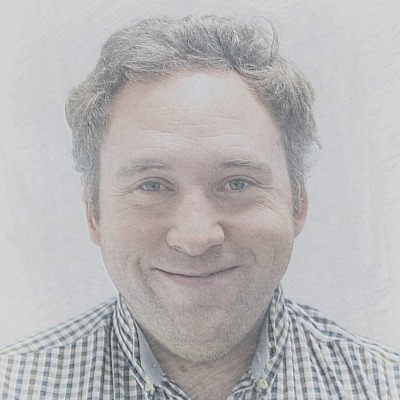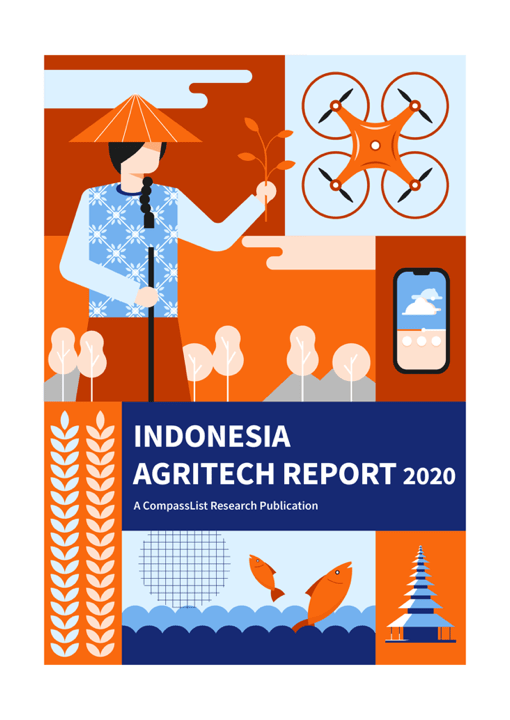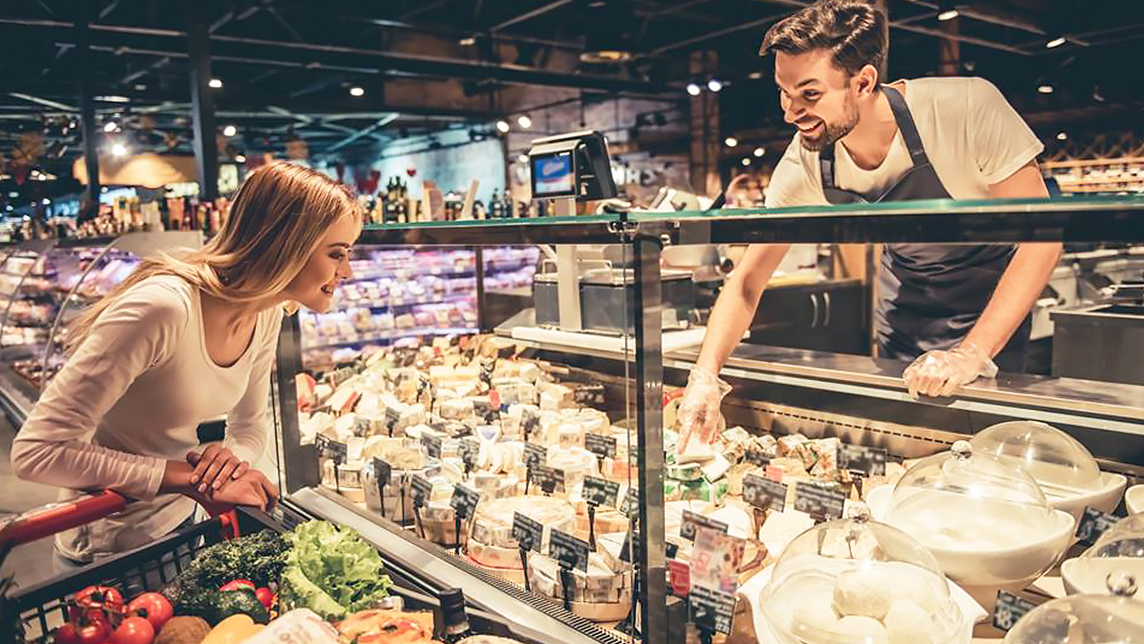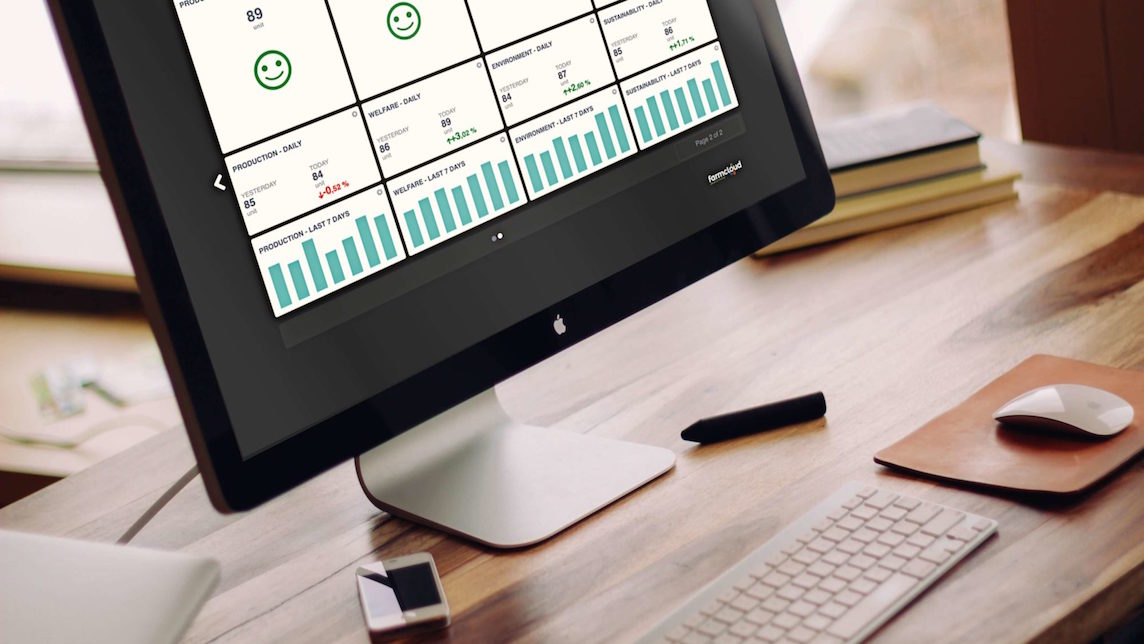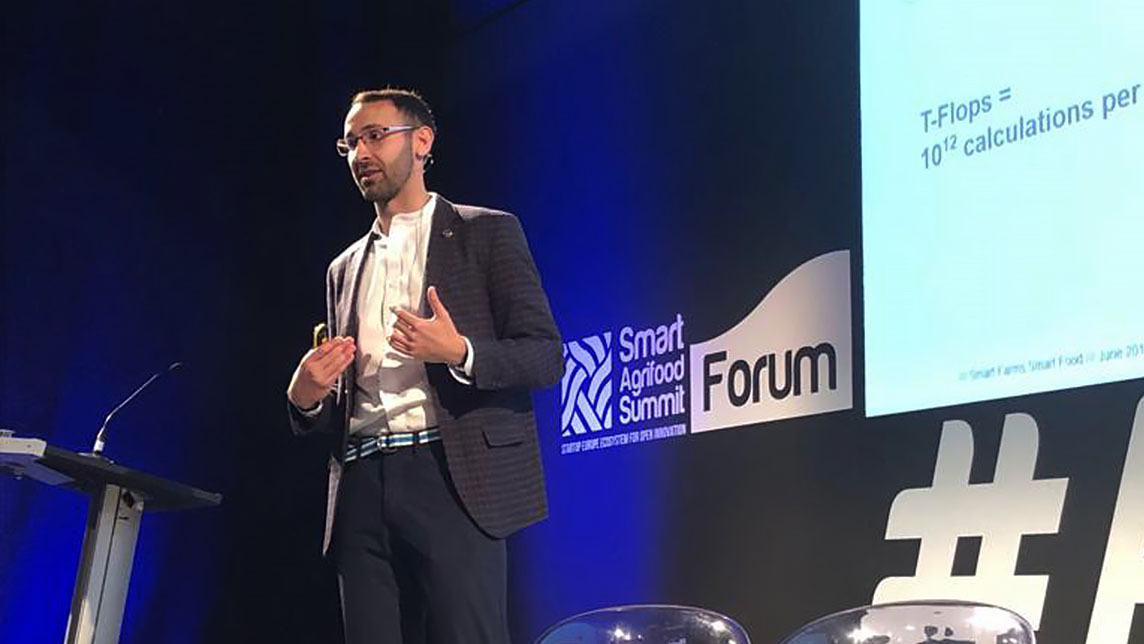Created by one of Spain's earliest IoT innovators and a cattle rancher, Digitanimal allows farms to track their herd remotely as they roam out to pasture, even as far as 100km and up in the mountains.
The Madrid-based startup is working on a new project, Cattlechain, to help farmers comply with EU standards for animal welfare. Building on Digitanimal's existing health- and location-tracking functions, Cattlechain also includes open source blockchain to enable food traceability through its animal welfare seal solution.
The EU's Animal Welfare Protocol focuses on the protection of animals kept for farming purposes. It recognizes animals as “sentient beings” and requires that its member states pay “full regard to the welfare requirements of animals.”
In a recent phone interview with CompassList, CEO Carlos Callejero shed light on the development of Digitanimal's work in smart cattle farming and Cattlechain; how his background in photonics research led to the creation of Sensowave, a pioneer in smart farming in Spain; and why they chose to apply IoT to free range farming.
Callejero has nearly 15 years of experience in the field. He leads the companies with co-founders, Technical Director Ignacio Gómez Maqueda and Commercial Director Rubén Blanco Carrera, who is also a cattle rancher.
The global smart agritech market, which includes remote cattle farming, is a fast-growing one, forecast to reach $22bn by 2025 based on a CAGR of 9.8% from $13.8bn in 2020. The market for food traceability, meanwhile, is forecast to grow at a CAGR of 9.3% from 2018 to $2.23bn worldwide by 2025.
The interview has been translated from Spanish, and edited for length and clarity.
How did you come to set up Digitanimal, and why?
One of our co-founders, Rubén [Blanco], is a rancher. He saw that there was no-one using IoT in ranching in the mid-2010s, despite its use in intensive farming. For those small farms with enclosed spaces, there were already devices working via Wi-Fi or Bluetooth, but there was nothing for free range and remote farming's open spaces, as there is no connectivity. We knew that here IoT would have more value than in already connected intensive farming with lots of data flow, so we began working on our first product.
Initially, we kept everything under our mother company Sensowave, but then we applied to join the European Space Agency accelerator and entrants had to be new companies (less than two years old) so we created a new company, Digitanimal, in 2016. It also made sense to have all of our animal and farming-focused technology under one Digitanimal brand.
The world of remote farming is managed as it was 100 or even 200 years ago. Although animals may be kept inside during winter, and are thus easier to monitor, in summer they are sent to pasture in nature to take advantage of free grazing. Cattle are kept like this from Australia to Patagonia and also in the north of Spain, especially the Pyrenees, where animals can be spread more than 100km apart.
Before our solution, ranchers didn't know where their animals were and it took weeks to locate them, with some livestock often lost forever. Also, there was no way to know if they were ill.
What sort of needs were there in ranching that IoT could meet?
The first demand was for a GPS animal tracker that would not lose signal or power, and we managed to get battery life to six-months to avoid this problem. Now, our technology allows ranchers to collect their whole herd in one day after the summer with no loss of animals.
Before our solution, ranchers didn't know where their animals were and it took weeks to locate them
Besides location, there was also a need to monitor attacks, illnesses or pregnancies. Since these animals are free and spread out, there was no way to know when or if they needed help or not. Thus, besides the GPS located on a special collar, we included an accelerometer that acts like an activity marker and, by building up the data collected, we can compare animals and build their individual track record.
If any abnormal data is identified in the parameters after algorithm processing, an alert will be sent to the rancher. We also have a body thermometer that can send alerts for abnormal readings and there is another sensor for when an animal is on heat.
We have additionally begun to monitor the use of pastures, looking at satellite images and cross-referencing them with heat maps of the animals to help ranchers improve the management of their grazing land.
From our data, we track every animal's position, temperature and its activity every half hour. We now monitor over 10,000 animals and the technology is being used in over 50 countries.
How does the Cattlechain project work with Digitanimal's technology? Why the need for Cattlechain?
Cattlechain goes further than our first agritech project developed at Sensowave, Stepla, or what we currently have at Digitanimal, namely: a robust device and developed algorithms. Cattlechain aims to adhere to the sensor parameters set out by the Animal Welfare Protocol, which is the EU's protocol on farm animal conditions.
Cattlechain is a direct response to those who still want to eat meat, but avoiding cruelty and unsustainable practices
We standardize the animal welfare requirements that are currently checked in-person, mainly by auditors. We saw that consumers are increasingly concerned about sustainability and the environment, as well as about the treatment of animals, so Cattlechain is a direct response to those who still want to eat meat, but avoiding cruelty and unsustainable practices.
Before Cattlechain, farmers could be warned in advance and could prepare for the animal welfare inspection, consisting of one visit of a few hours. Our technology assesses these welfare requirements 24/7, 365 days a year, including room temperature, weight, the animal's access to water and food, sufficient space to move freely, etc.
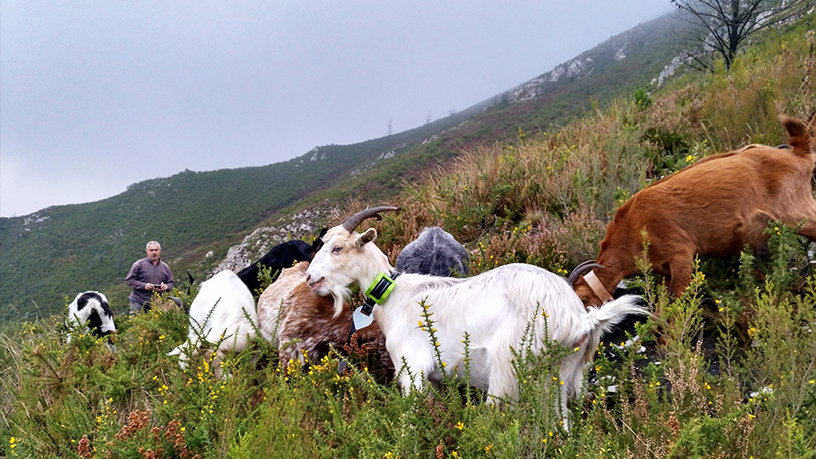
We monitor these things from the animal's birth to its fattening stage. When an animal is born, we put the sensor on its ear like an ID tag that links to the collar worn by the mother, which is the gateway and which monitors the young one. Each young calf is therefore monitored via the tag when pasturing and if it is sent to an intensive farm for fattening, the tag connects with another tag in the truck instead of to its mother's, monitoring welfare conditions during the journey. For example, how many animals, the ambient temperature and the time taken. When the calf arrives at the fattening farm, the collar connects with sensors there. Every time it goes to eat or drink, it is individually weighed by scales located under the dispensers.
We are planning to extend Cattlechain to monitor welfare up to the animal's death. No slaughterhouse lets you put a camera there so we monitor the process via microphone, recording how long it takes and the level of suffering. Thereafter, we go back to using big data to set the parameters of what is normal and what constitutes suffering according to vet research, and including this in the Animal Welfare Protocol.
How and when will you launch Cattlechain as a product from its current research project status?
Cattlechain is the name of the European Union project that will be sold via Digitanimal. We will have the right to sell the animal welfare “seal” traceability solution, but we also have various partners in livestock rearing and the technological side.
FIWARE [the EU-based open cloud-based infrastructure for IoT applications] is our technical partner for the databases and for its open source blockchain, based on Hyperledger, which ensures that neither Digitanimal nor any other manufacturer can lie about the data. This will then be offered to another sector.
The project will end in another year and is currently halfway through. One of our partners is a rancher called Natrus that does farm-to-fork production, and we hope they will be the first company to get a seal like this for their product. We will launch it as a benchmark before the end of the project to see if it is accepted by the public.
It takes a long time to produce a seal, as each animal is monitored for their life duration of between 12 and 18 months. Only a few months after the end of our project will we have the first product from Natrus with a seal on the market. We will outsource the welfare certification to vets, or to a certifying organization such as our partners in Cattlechain, the French Livestock Institute (Idele), or local government authorities who will comply with EU law. However, the certifying process is not yet completely defined because it is a totally new product.
Besides Horizon2020 funding, have you secured any financing to date or are you looking to do so?
Apart from paying clients, we received €120,000 from an accelerator in Madrid, Impact Growth. We are also thinking about private funding but it is not urgent. This would be to help expand outside Europe.
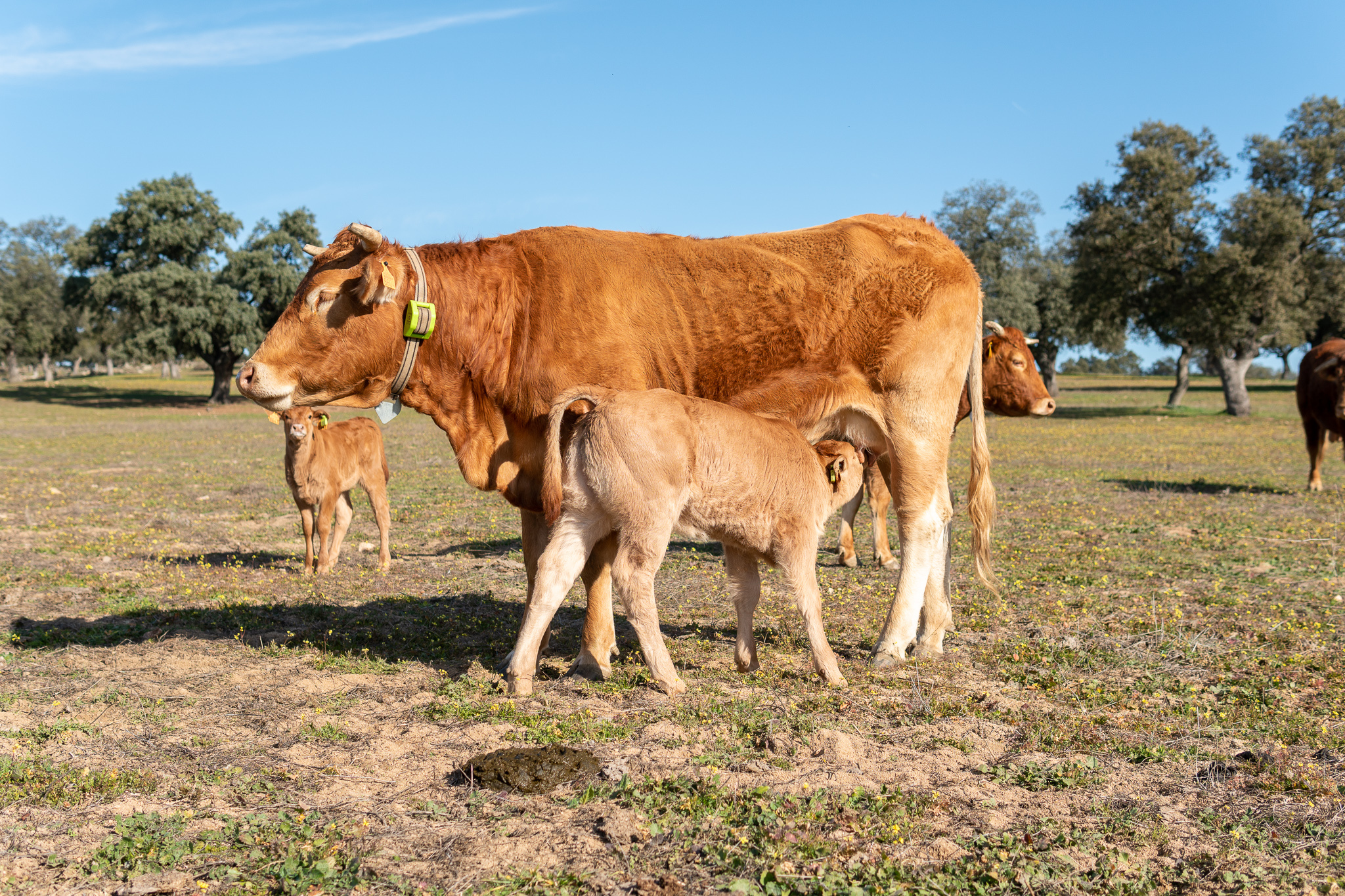
How are you coping in the current Covid-19-induced economic downturn?
March was very hard for us. We earned only 25% of what we had planned. April has been a bit better with 40–45%. We did not apply for temporary redundancies, but we had to let three people go out of 20. We have also requested postponement of VAT and income tax payments but, luckily, we have not had to postpone the Cattlechain project.
You founded Sensowave in 2014. What sort of technological challenges did you face then while developing your products?
Around end-2014, when we founded Sensowave, we were experimenting with monitoring animals using Rubén's family's ranch. We were using some US radio modules to produce connectivity, connecting them to the animals and then using antennae. But the signal traveled only 700m.
However, as soon as Sigfox's first commercial network IoT came out, we changed the chip of the US radio for Sigfox, and, depending on the type of antenna used, the signal could travel over a radius of 15–100km. Using a base antenna set up in mountainous areas, sensors can connect to the Internet via the 2G/3G network and extend even to 80km.
The signal could travel over a radius of 15–100km
In remote flat areas such as the Pampas in South America and in central Spain, where Rubén's farm is, we secured an agreement with a satellite provider to give coverage using Hispasat, which is cheap, even for farmers. This is because such connectivity is government-subsidized, in areas where there is no other solutions.
We got EU funding for this project, called Stepla, trialing different versions of apps with hundreds of users and increasing battery life to six months to get a robust device. That was perfect for monitoring remote ranching. Stepla really marked the birth of Sensowave, especially when we got €300,000 in Horizon2020 Phase II funding.
SensoWave also developed an IoT application for human use? How did VardiaN come about?
VardiaN was a spinoff using the same monitoring technology developed under Stepla, but for entirely different purposes. It monitors solitary workers in at-risk workspaces who could have an accident without anyone knowing. For example, those working at high altitudes or in remote places.
Though it is not our main focus, we are currently working with a petrol refining company to ensure that all the workers in a plant are monitored. The sensor is contained in a smart card in a security pass that has to be with them at all times. For very, very remote locations, we need to use Sigfox or Lora sensors and an antenna using solar panels or batteries to be self-sufficient in energy.
Finally, how did you go from a background in physics to become one of Spain's IoT pioneers?
I initially studied physics in Zaragoza and was especially interested in images and optics. Then I went to study at Reading University in the UK because it had an MSc in Applied Modern Optics. Thereafter, I did a PhD at the same university, studying Millimeter Waves, which are somewhere between infra-red and radio waves and which are mainly used for image capture.
After 9/11, this technology began to be used in security alongside sensors and we switched our work in Reading to work on body scanners.
Then I returned to Spain, where I began to work on this technology, which was completely new here, with the Army Research Laboratory. I co-founded my first company Alfa Imaging in 2006. We had three main products: two types of body scanner (one using radar and another without), updated periscopes for Spanish submarines, and the last, and most simple, technology was autonomous sensors to protect borders and infrastructure. This was in 2010 and it was the start of IoT, though still a long away from use in the home.
In 2012, at Alfa, we realized that everything we had done with sensors in protecting infrastructure and borders could be taken to the civilian world, offering security for private installations and then for homes. In 2014, we set up Sensowave and began to apply this technology in the home and then looked to rolling out a product.
We saw that, to arrive at a large market like home IoT, we would have to compete with companies in the US already in partnerships with Apple or Google, and with multi-million-dollar backing. We knew it would be very difficult to compete in Spain and so with the ranching connection we had, besides VardiaN, we concentrated our resources in the remote farming area.
